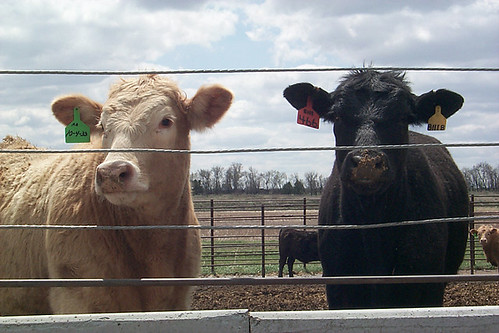By Craig A. Morris

Through LMR, more than a million livestock producers, hundreds of meat processors, some 37,000 retail food outlets, more than 1 million restaurants, as well as meat exporters, and many other stakeholders received critical data and market intelligence on a daily basis.
The Livestock Mandatory Price Reporting (LMR) Program was created to expand pricing information available to the livestock industry. The data is collected and distributed by USDA’s Agricultural Marketing Service (AMS) through its USDA Market News division to provide market information for cattle, swine, lamb, and livestock products.
LMR encourages competition in the marketplace by vastly improving price and supply data, bringing transparency, breadth and depth to market reporting. Through LMR, livestock producers and processors, retail food outlets, restaurants, exporters, and many other stakeholders receive critical market intelligence on a daily basis. Literally thousands of business transactions every day rest on the outcome of LMR data.
The program gets its authority through the Livestock Mandatory Reporting Act of 1999, which must be reauthorized by Congress every five years. The 2015 reauthorization required AMS to conduct a comprehensive study of LMR due to Congress by March 1, 2018. In addition to working with USDA’s Office of the Chief Economist on the study, we will be engaging cattle, swine, and lamb producers, packers, and other market participants to gather information regarding the marketing practices used for livestock and meat to identify legislative or regulatory recommendations for the next reauthorization in 2020.
As a first step in this process, AMS commissioned Value Ag, Inc., to conduct a baseline analysis of the livestock and meat industry and LMR during this past year. This baseline study provides an overview of the evolving livestock and meat markets to be taken into consideration in the comprehensive final study.
Since enactment of the 1999 Act, major changes have occurred in the livestock and meat industry. The baseline study identified several trends in how livestock and meat production and markets have evolved. For instance, over the past 15 years packers have become larger, more concentrated, and more vertically integrated. Also, the industry has made major investments to improve supply chain management, and the use of LMR information has expanded beyond price discovery. Additionally, consumer preferences have changed, and packers are marketing a wider variety of value-added and specialty products to meet consumer demand.
The baseline study identified several key implications of these trends. With greater vertical integration and concentration in the industry, the negotiated markets have become thinner, and consequently, the LMR confidentiality requirements have limited the depth of market information provided in some markets that the industry needs. In addition, there is a greater variety of meat products in the marketplace today than ever before, which also needs to be assessed for the reauthorization. These are just some of the highlights from the study. You can access the full report at: Baseline Study of Livestock and Meat Marketing Trends and Implications for LMR.
As we prepare for the comprehensive study, AMS will be inviting industry representatives from National livestock and meat trade associations and organizations to participate in a series of stakeholder meetings to discuss the marketing methods, the current challenges with reporting livestock and meat markets, and the needs of the industry regarding future revisions to LMR. The goal of these meetings is to reach consensus on what each commodity area needs changed in the next reauthorization. AMS has tentatively scheduled the first meeting for mid-November. AMS will share more information when the schedule is finalized.
We are looking forward to working together as we complete the comprehensive LMR study and the report for Congress to serve as the basis to inform the next reauthorization.
Source:usda.gov